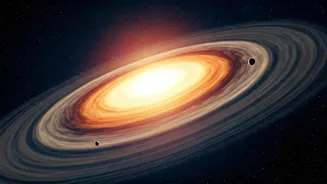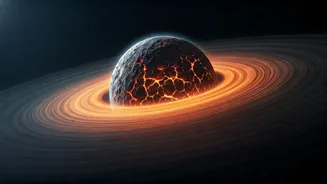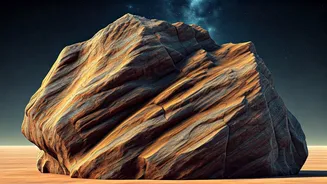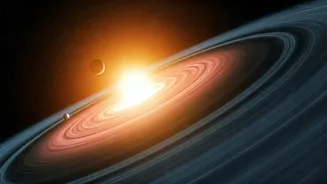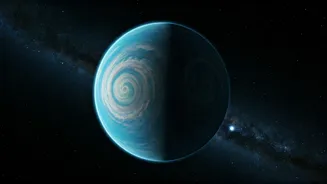Dusty Lunar Enigma
The Moon, Earth's celestial companion, possesses a subtle yet captivating feature: a dust halo. This halo, composed of tiny dust particles, is not uniformly
distributed. It appears denser on the side of the Moon illuminated by the Sun. Scientists have long sought to understand the mechanisms behind this uneven distribution, and their recent discoveries have provided valuable insights. The research team employed advanced computational models to simulate the behavior of dust particles under various conditions, considering factors like solar radiation pressure, the Moon's gravity, and the lunar surface's characteristics. The primary goal was to reproduce the observed asymmetry in the dust halo. Previous studies had presented different theories, but this research offered a more comprehensive understanding by integrating multiple variables.
Sunlight's Dominant Role
The study's primary revelation is the critical role played by sunlight in shaping the dust halo's appearance. The scientists found that solar radiation pressure, the force exerted by photons emitted by the Sun, significantly impacts the dust particles. When sunlight strikes the dust particles, it imparts momentum, causing them to move. This force is particularly strong on the sunlit side of the Moon, where particles are continuously bombarded with light. The research demonstrated that this constant pushing from the Sun tends to loft the dust particles higher above the lunar surface, creating a denser concentration in the process. The simulation was adjusted to include the effect of the Sun. They saw that the model successfully replicated the observed asymmetry, confirming the hypothesis that solar radiation pressure is the main driver of the uneven distribution of dust in the Moon's halo.
Lunar Surface Effects
Beyond solar radiation, the lunar surface itself contributes to the dust halo's dynamics. The Moon's surface is not uniform; it comprises various features, including craters, mountains, and plains. These features influence the distribution and behavior of dust particles. As dust particles interact with the lunar surface, they can be charged by solar radiation, leading to electrostatic effects. These effects further influence the dust's trajectory. The study accounted for this complexity by incorporating data about the lunar surface in the models. It was found that the specific properties of the regolith (the loose, granular material covering the Moon) played a role in how the dust particles behaved after interacting with the surface. The roughness and composition of the regolith influenced the charge transfer and therefore the trajectory of the dust particles. The outcome of the research showed that the Moon's surface, in combination with solar radiation, helps the formation of the dusty halo.
Broader Implications
Understanding the Moon's dust halo has implications beyond astronomy. The lunar environment presents unique challenges to space exploration, and dust particles pose a hazard to spacecraft and equipment. They can damage solar panels, erode surfaces, and affect the performance of instruments. This research provides valuable insights into the behavior of dust in a low-gravity environment and helps scientists predict and mitigate the effects of dust on future missions. The more detailed knowledge of the dust halo will help engineers design protective measures and technologies, such as improved dust shields. Moreover, this study's findings contribute to a larger body of knowledge about how particles behave in space, useful for analyzing dust and the cosmic environment. Future research can consider even more complex factors, leading to a more complete picture of our cosmic neighbor.




